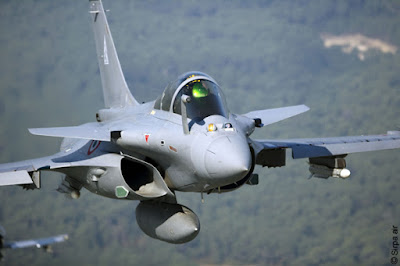The ongoing negotiations with France to buy 36 Rafale fighter jets has hit an air-pocket with the French negotiators refusing to accept changed technical specifications from the Indian Air Force (IAF) for integrating the indigenous Astra missile to the French platform.
The IAF wants certain changes in the platform configuration to integrate the DRDO-made air-to-air, beyond-visual-range Astra missile, which was successfully test-fired from a Su-30 MKI aircraft. The missile was tested twice on consecutive days in March.
Following the success, IAF wants modification and reconfiguration of some of the avionics and weapon systems to keep an window open for integration of Astra at a later date.
The French side objected to the idea because a change in the configuration means going through the aircraft certification process once again, which would lead to an increase in cost. Instead, Paris wants to supply its own air-to-air missiles, which New Delhi will have to purchase additionally.
Another sticky point in the negotiation is the offset clause, under which Rafale manufacturer Dassault Aviation would have to reinvest a part of the money it would earn from India after selling the Rafale jets, in Indian military industry.
The defence ministry constituted a committee headed by Air Marshal SBP Sinha to negotiate with the French team that offered the jets almost at the same price as was being discussed in the previous global tender process, which has been scrapped by the Narendra Modi government.
During his April visit to Paris, Modi made an announcement to buy 36 Rafale aircraft from France in a government-to-government contract. The previous process to buy 126 fighter jets to replace the ageing MiG-21s, was abandoned.
French defence minister Jean-Yves Le Drian met his Indian counterpart Manohar Parrikar in Delhi in May to work out the details of the acquisition plan in a time bound manner. The two sides decided to complete the price negotiation by July 31, but then the deal encountered rough weather. There was no meeting between the two sides in the recent past, which may be an indication of the stalemate.
“The benchmark for the prices are already there since the (French) deal with Egypt and Qatar has been struck. The price of the aircraft to India cannot be less than what the other two countries have bought it for,” sources said.
Defence Ministry officials still hope to conclude the deal at a price, which could be just 2-3 per cent per cent more that what was being discussed between the two sides in the earlier process.
The IAF wants certain changes in the platform configuration to integrate the DRDO-made air-to-air, beyond-visual-range Astra missile, which was successfully test-fired from a Su-30 MKI aircraft. The missile was tested twice on consecutive days in March.
Following the success, IAF wants modification and reconfiguration of some of the avionics and weapon systems to keep an window open for integration of Astra at a later date.
The French side objected to the idea because a change in the configuration means going through the aircraft certification process once again, which would lead to an increase in cost. Instead, Paris wants to supply its own air-to-air missiles, which New Delhi will have to purchase additionally.
Another sticky point in the negotiation is the offset clause, under which Rafale manufacturer Dassault Aviation would have to reinvest a part of the money it would earn from India after selling the Rafale jets, in Indian military industry.
The defence ministry constituted a committee headed by Air Marshal SBP Sinha to negotiate with the French team that offered the jets almost at the same price as was being discussed in the previous global tender process, which has been scrapped by the Narendra Modi government.
 |
| France Rafale |
During his April visit to Paris, Modi made an announcement to buy 36 Rafale aircraft from France in a government-to-government contract. The previous process to buy 126 fighter jets to replace the ageing MiG-21s, was abandoned.
French defence minister Jean-Yves Le Drian met his Indian counterpart Manohar Parrikar in Delhi in May to work out the details of the acquisition plan in a time bound manner. The two sides decided to complete the price negotiation by July 31, but then the deal encountered rough weather. There was no meeting between the two sides in the recent past, which may be an indication of the stalemate.
“The benchmark for the prices are already there since the (French) deal with Egypt and Qatar has been struck. The price of the aircraft to India cannot be less than what the other two countries have bought it for,” sources said.
Defence Ministry officials still hope to conclude the deal at a price, which could be just 2-3 per cent per cent more that what was being discussed between the two sides in the earlier process.




No comments:
Post a Comment